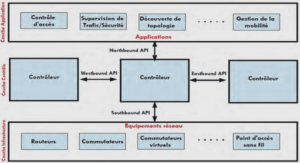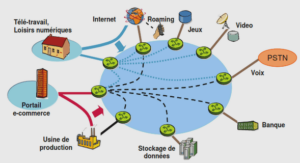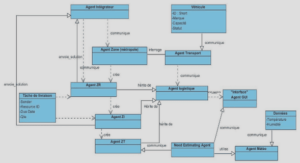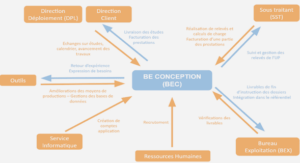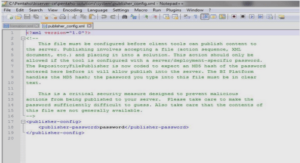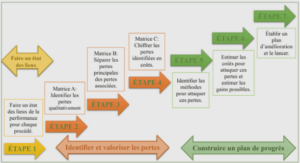L’interception et ses lois de contrôle
The aim of this study was concerned with the process by which participants select laws of control in interceptive task while we biased the self-motion velocity. We used a virtual environment coupled with a treadmill to test two perceptual strategies involved in interceptive action: the Constant Bearing Angle (CBA) and the Modified Required Velocity (MRV). We manipulated the curvature of the ball’s trajectories and the display of these trajectories. Participants were asked, if necessary, to modify their walking velocity in order to intercept a ball while we biased the self-motion velocity by manipulating the Global Optical Flow Rate (GOFR). Results showed a large effect of the curvature on walking velocity when the trajectory was not displayed, which was a signature of use of the CBA strategy. On the contrary, the walking velocity produced was less affected by displaying the trajectory, which suggested the use of the MRV strategy. Results also showed that biasing the self-motion velocity entailed longer velocity regulations when the MRV strategy was used than when participants used the CBA strategy. However, contrary to the predictions of the MRV model, the effect of the manipulation of GOFR lasted until the middle of the trial and the subjects were able to perform the interception. This suggests that subjects used the MRV model until they realized the failure was imminent and they switched to the CBA model.
The perceptual control of goal-directed behavior has been addressed in a large set of studies over the last decade. These studies have not only allowed for a better understanding of the perceptual-motor dialogue underlying the control of the action. They have also given rise to the formalization of laws of control proposing unequivocal (and hence testable) accounts of the mutual dependency between motor and perceptual components in different tasks. Conceptually, these laws of control are taken to reflect the operation of organizational (perceptual-motor) principles and theoretically allow several categories of agents to perform a given task under a wide variety of experimental conditions. Morice, Francois, Jacobs et Montagne, (2010) recently questioned the presumed robustness of one such a law of control (known as the Constant Bearing Angle strategy) in the domain of interceptive tasks performed by humans. According to this law of control (Equation 1) (Figure 40A), the strategy of maintaining constant the angle subtended by the current position of the target and the direction of displacement of the observer gives rise to interception of the ball:
Experimental Procedure
Before beginning the experiment proper, participants were asked to walk 5 minutes on the treadmill in order to familiarize themselves with the apparatus. Participants were then asked to walk as naturally as possible during 3 minutes. Their preferential walking velocity was recorded and both the mean and variability (SD) of displacement velocity computed. We used the experimental protocol developed by François et al. (under review) which corresponded to a preparation phase followed by a test phase, separated by a 30 s rest period during which participants stood upright in the dark (Figure 41B). The inclusion of the preparation phase was essentially methodological. By forcing the participants to adopt several different speeds during the preparation phase, we expected them to rely on the visual information available during the test phase when they had to reproduce their preferred walking speed. During the preparation phase preceding each test phase, participants were asked to walk at an imposed velocity, corresponding to 80%, 100% or 120% of their preferred velocity, during 2 minutes (Figure 41B). To drive the participants to walk at The test phase comprised two different tasks. In the first part of the test phase, participants were asked to walk at their preferred walking velocity during 45 seconds (walking task). In the second part of the test phase participants were to intercept a moving ball, appearing on the right hand side of the visual scene, by modifying, if necessary, their displacement velocity (interceptive task). At the end of each interception trial, successful interception was indicated to participants by the appearance of a green square, whereas a miss was indicated by a red square. The ball always approached while moving from right to left, and participants were forced to move forward.
Independent variables
During the test phase, we manipulated the Curvature of the ball path (two modalities), the Display Condition of the ball path (two modalities) and the Eye Height (three modalities). The balls could approach along a rectilinear path (no curvature condition) or along a curved path (negative curvature conditions) (Figure 42B). In the curved conditions, a constant curvature of – 0.2 m-1 was achieved by making the ball move along (a portion of) an imaginary circle with a radius of 5 m, passing through the departure and arrival points of the ball. In half of the trials, the ball-path-displayed condition, the spatial ball path was depicted in the virtual environment throughout the trial duration, as a 0.2 m wide line situated 0.4 m below the ball path (cf., Morice et al., 2010, Chapter §) (Figure 42A). In the remaining trials, the ball-path-not-displayed condition, the ball approached without its path being depicted in the virtual environment. Finally GOFR was manipulated through variations in Eye Height that corresponded either to the participants’ veridical eye height (control condition)(EH) or was multiplied (EH 2) or divided (EH 0.5) by a factor 2 (Figure 40A).

